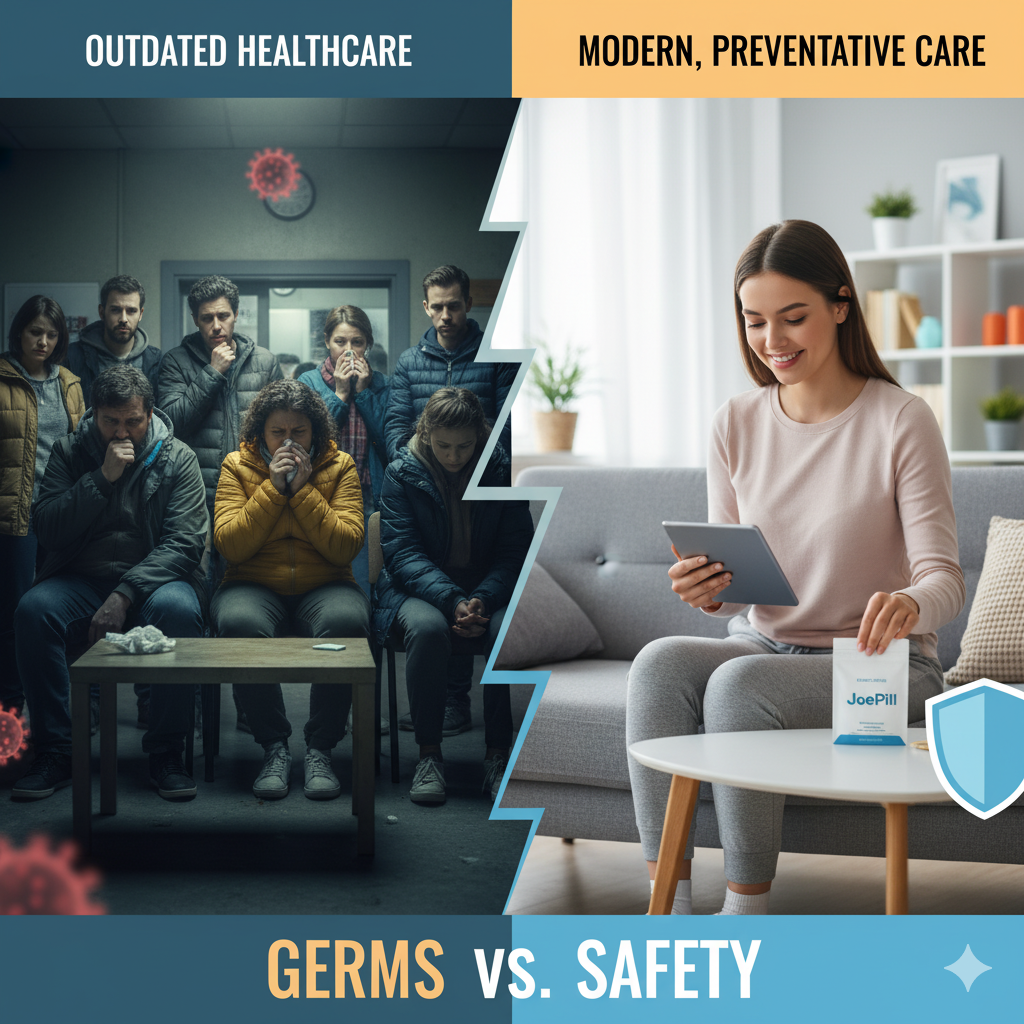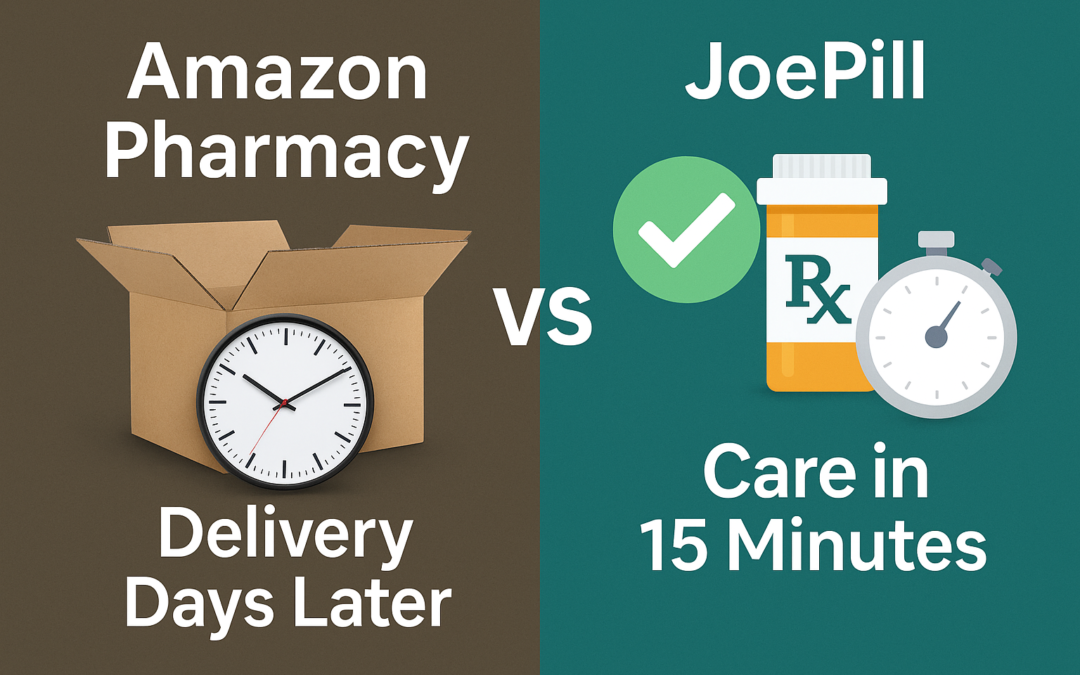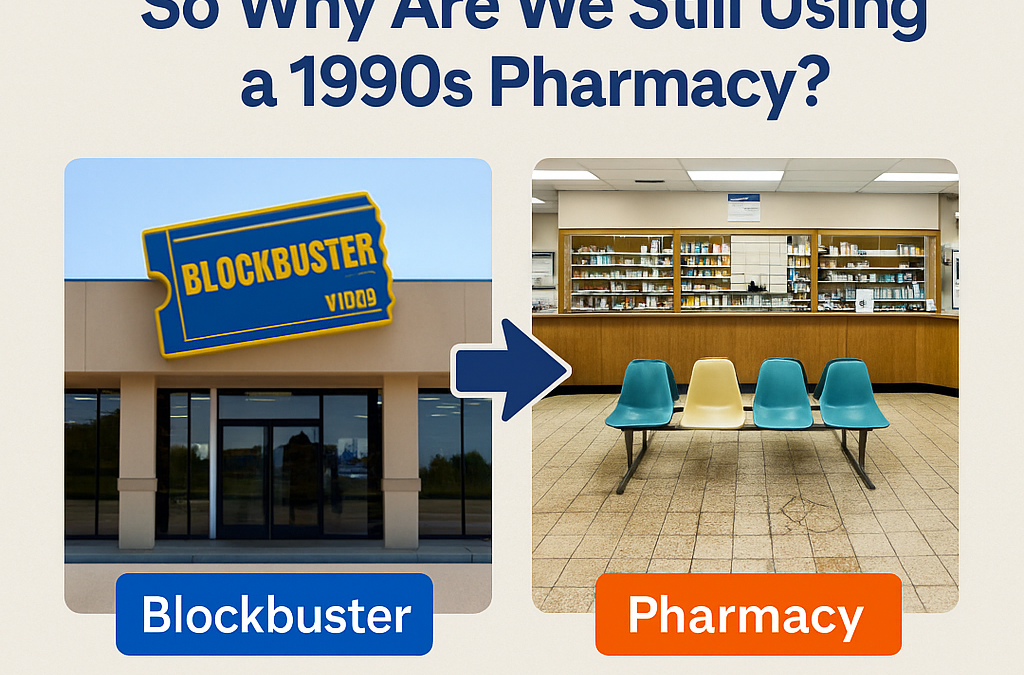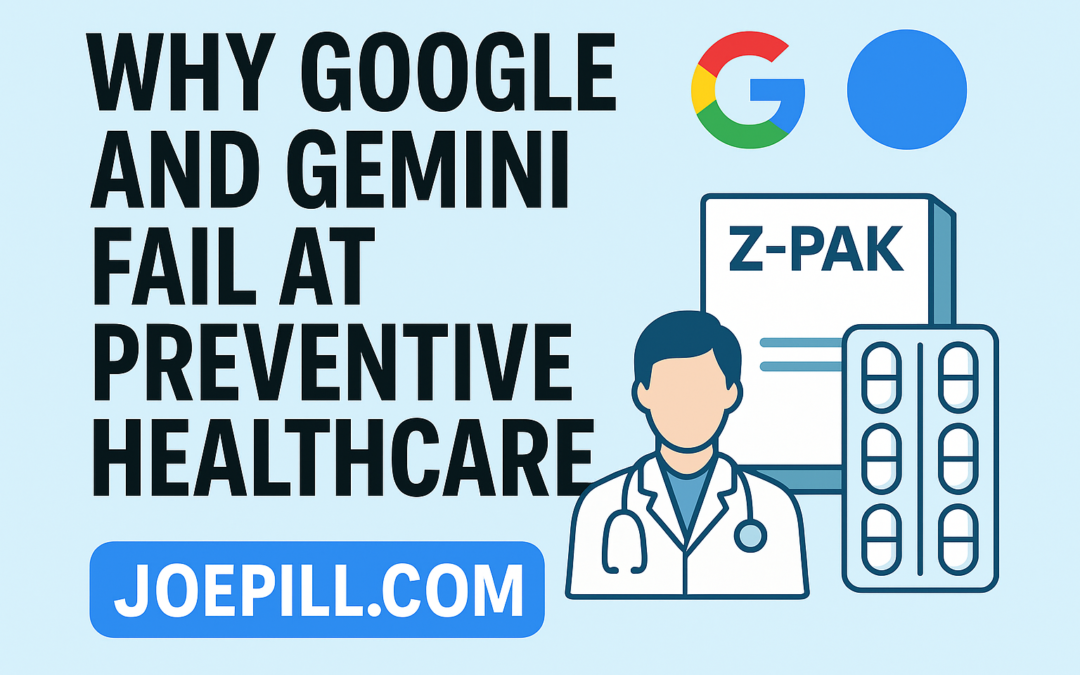
Busting the Myth: How JoePill is a Solution, Not the Problem, for Antibiotic Resistance
When we talk about healthcare innovation, skepticism is normal. A common refrain appears whenever antibiotics are discussed: “Antibiotic resistance.” It matters. Responsible providers take it seriously. Some critics look at JoePill and suggest our model contributes to the problem. That is not accurate.
Today we are turning the mirror toward the real drivers of spread and resistance: outdated care models, germ-filled waiting rooms at clinics and pharmacies, and dangerous delays that let infections multiply and circulate.
Q&A
- Q1: How does JoePill specifically help combat antibiotic resistance?
- A1: JoePill enables early, swift, and appropriate treatment. Fast access to licensed medical providers and home delivery helps patients treat infections at the first sign, reducing time for bacteria to multiply or spread and avoiding exposure to germ-filled waiting rooms.
- Q2: Isn’t providing antibiotics more easily just contributing to overuse?
- A2: No. Every prescription is reviewed by a licensed medical provider who ensures an antibiotic is necessary. Timely access supports appropriate use and can prevent escalation that might otherwise require stronger or longer courses.
- Q3: How does JoePill prevent the spread of germs better than a traditional doctor’s visit?
- A3: JoePill keeps you out of waiting rooms at both the clinic and the pharmacy. Staying home and receiving direct delivery lowers cross-contamination and community spread.
- Q4: Are JoePill’s medical providers trained in antibiotic stewardship?
- A4: Yes. Providers follow current guidelines and best practices. They prescribe only when indicated and for the shortest effective duration.
- Q5: What if symptoms worsen?
- A5: JoePill is designed for early treatment of common, non-emergency conditions. If symptoms worsen or are severe, seek immediate in-person or emergency care.
The Double Dose of Germs: The Waiting Room and the Pharmacy
Traditional waiting rooms can act like a petri dish. You arrive with one problem and leave after exposure to many others. Then you make a second stop at the pharmacy where more exposure can happen. JoePill removes both waiting rooms from the path to care.
What the Research Shows
Formal studies and public health guidance document how healthcare environments can foster the spread of resistant organisms—even outside inpatient wards:
- Outpatient & urgent care surfaces contaminate quickly. A tracer study in an outpatient/urgent care setting found that more than half of surfaces and hands became contaminated in under two hours[1].
- Waiting areas and common fixtures can be reservoirs. Multiple investigations show persistent contamination in healthcare environments—especially sinks and drains—with multidrug-resistant organisms linked to outbreaks[2][3][4].
- Transfer via hands, clothing, and surfaces is demonstrable. Simulation and tracer experiments demonstrate organism transfer from patient areas to personnel and the environment, even when fluorescent markers are not visible[5][6].
- CDC: healthcare settings are key sites of spread. The CDC states antimicrobial-resistant germs can spread within and between facilities; prevention hinges on reducing exposures and improving infection control[7][8][9].
The Delay Dilemma: Fueling the Spread of Superbugs
Delays in care don’t just prolong misery—they create more opportunities for bacteria to multiply, mutate, and spread. While no RCT assigns people to “sit in a crowded waiting room,” related evidence and stewardship studies point the same direction:
- More exposure time, more opportunity to spread. Environmental contamination + human movement raise transmission risk in shared spaces[1][7][8].
- Better timing and appropriateness of therapy matters. Large urgent-care stewardship initiatives reduce unnecessary antibiotic use—lowering selective pressure that drives resistance[10][11].
JoePill: Proactive Care as the Ultimate Defense
- Rapid treatment: Act early to prevent severe infection.
- Reduced spread: Less time contagious means lower community transmission.
- Targeted use: Licensed providers prescribe only when appropriate.
It Is Time for a Shift
Clinging to slow, exposure-heavy systems does not curb resistance. Embracing a model that keeps patients at home and moves fast does. JoePill is not part of the problem. JoePill is part of the solution.
References
- Reynolds KA et al. Microbial transmission in an outpatient clinic and impact of an intervention (tracer study). Open-access: https://pmc.ncbi.nlm.nih.gov/articles/PMC7173130/
- McCallum GE et al. The hospital sink drain microbiome as a melting pot for AMR (review/outbreak data). Nature Rev Microbiol (2025): https://www.nature.com/articles/s44259-025-00137-9
- Laço J et al. Yearlong analysis of bacterial diversity in hospital sink drains (includes resistant species). Open-access: https://pmc.ncbi.nlm.nih.gov/articles/PMC11868096/
- Li Q et al. Contaminated faucets and sinks as a reservoir for antibiotic-resistant bacteria (hospital study). J Infect Dev Ctries (2025): https://www.jidc.org/index.php/journal/article/view/39977473
- Casanova L et al. Virus transfer from PPE to bare hands and surfaces (lab tracer). Open-access: https://pmc.ncbi.nlm.nih.gov/articles/PMC2600382/
- Alhmidi H et al. Pilot study using fluorescent lotion to illustrate spread. Open-access: https://pmc.ncbi.nlm.nih.gov/articles/PMC5072336/
- CDC. Antimicrobial Resistance in Health Care: Causes & How it Spreads (2024): https://www.cdc.gov/antimicrobial-resistance/causes/healthcare.html
- CDC. Environmental Cleaning Procedures (2024): https://www.cdc.gov/healthcare-associated-infections/hcp/cleaning-global/procedures.html
- CDC. MDRO Management Guideline (2024): https://www.cdc.gov/infection-control/media/pdfs/guideline-mdro-h.pdf
- Stenehjem E et al. Antibiotic stewardship initiative in a large urgent-care network. JAMA Netw Open (2023): https://jamanetwork.com/journals/jamanetworkopen/fullarticle/2804780
- Park DE et al. Evaluating an urgent care antibiotic stewardship intervention (2025). Open-access: https://pmc.ncbi.nlm.nih.gov/articles/PMC11883647/










